For many international visitors to France, the River Seine is synonymous with the romantic banks of Paris. The celebrated river flows through Paris from East to West. It finds its way along the picture-postcard banks connected by a series of iconic bridges. There, bateaux-mouches gently move from the Eiffel Tower to Notre-Dame in a perpetual procession. That said, the Seine is much more than that. It is a natural waterway with historic and cultural connotations. This article will show you the best places to see along the Seine River, from its sources to the English Channel at Le Havre.
The Seine, one of France’s most iconic rivers
The River Seine rises at an altitude of 446 metres above sea level at Source-Seine in the Langres Plateau. The source is situated some 30 km northwest of Dijon, Burgundy.
The river flows northwest in a winding course until it empties into the English Channel at Le Havre.
The Seine is 776 km long and crosses the cities of Troyes, Paris, and Rouen. It is in fact France’s second-longest river after the Loire.
The basin area (78,910 square kilometres, including a little part of Belgium), is home to almost 30% of the total population of France.
The watershed of the Seine not only includes Paris, but also provincial towns such as Rouen, Le Havre, Reims, Troyes, Beauvais, Auxerre, and Evreux.
![Topographic map of the Seine basin © Paul Passy - licence [CC BY-SA 3.0] from Wikimedia Commons](https://frenchmoments.eu/wp-content/uploads/2020/05/Topographic-map-of-the-Seine-basin-©-Paul-Passy-licence-CC-BY-SA-3.0-from-Wikimedia-Commons.jpg)
The Seine is a fleuve
The French make a distinction between “un fleuve” and “une rivière”.
- Simply put, “un fleuve” is a river that empties into the sea such as the Loire, the Garonne, the Rhône or the Rhine.
- “une rivière” or “un affluent” is a tributary which empties into another river or a fleuve. Examples: the Sâone, the Moselle, the Lot or the Marne.
The affluents of the Seine
Some of the Seine’s affluents are famous, particularly because they have given their names to the départements at the French Revolution.
- Aube River (248 kms). Département : Aube [10], head city: Troyes.
- Essonne River (101 kms). Département : Essonne [91], head city: Evry-Courcouronnes
- Eure River (228 kms). Départements : Eure [27], head city: Evreux / Eure-et-Loir [28], head city: Chartres
- Marne River (514 kms). Départements : Marne [51], head city: Châlons-en-Champagne / Haute-Marne [52], head city: Chaumont / Seine-et-Marne [77], head city: Melun / Val de Marne [94], head city : Créteil
- Oise River (341 kms). Département : Oise [60], head city: Beauvais / Val d’Oise [95], head city: Pontoise
- Yonne River (292 kms). Département : Yonne [89], head city: Auxerre
The Seine, a historical river
The name of the River Seine derives from the Latin Sēquana. It is believed this was the name of the Gallo-Roman goddess of the river.
Over the centuries the Seine has become an important commercial waterway within the Paris Basin, particularly between Paris and Le Havre.
Napoleon once said:
“Le Havre, Rouen, and Paris are a single town, and the Seine is its High Street.”
(Paris, Rouen, Le Havre ne forment qu’une seule ville, dont la Seine est la grand rue.)
The Seine: an inspiring river!
In the 19th and the 20th centuries, the Seine inspired many painters, such as Eugène Boudin, Camille Corot, Henri Matisse, Claude Monet, Camille Pissarro, and Alfred Sisley.
Along the Seine River
The Seine can be divided into five parts:
- the “Small Seine” (Petite Seine) from the sources to Montereau-Fault-Yonne
- the “Upper Seine” (Haute Seine) from Montereau-Fault-Yonne to Paris
- the “Crossing of Paris” (Traversée de Paris)
- the “Lower Seine” (Basse Seine) from Paris to Rouen
- the “Maritime Seine” (Seine maritime) from Rouen to the estuary of Le Havre at the English channel.
Let’s find out some of the most beautiful places along the Seine River starting with its sources!
The Sources of the Seine
French pupils learn at school that the River Seine rises at the Langres Plateau (plateau de Langres).
This limestone highlands is situated in the Haute-Marne and Côte d’Or départements. It takes its name from the historic little town of Langres.
![Langres par Vassil [Public Domain]](https://frenchmoments.eu/wp-content/uploads/2020/05/Langres-par-Vassil-Public-Domain.jpg)
But the sources of the Seine are much closer to Dijon than they are to Langres… in fact, you wouldn’t notice you are in the Langres plateau… for this is definitely Burgundy!
Let’s start our journey along the Seine by the village where of Source-Seine.
![The village of Source-Seine from above © Toutoune12 - licence [CC BY-SA 3.0] from Wikimedia Commons](https://frenchmoments.eu/wp-content/uploads/2020/05/Source-Seine-from-above-LR-©-Toutoune12-licence-CC-BY-SA-3.0-from-Wikimedia-Commons.jpg)
The grotto and a piece of land owned by Paris
At the exact location of the source is an artificial grotto built in the 19th century to protect it. It includes a statue representing the Seine goddess Sequana, a dog and a dragon.
![The grotto at the Source of the Seine © Thesupermat - licence [CC BY-SA 3.0] from Wikimedia Commons](https://frenchmoments.eu/wp-content/uploads/2020/05/Saint-Germain-Source-Seine-LR-©-Thesupermat-licence-CC-BY-SA-3.0-from-Wikimedia-Commons.jpg)
Since the 19th century, archaeologists have unearthed the buried remains of a Gallo-Roman temple and a number of ancient artefacts.
There, the Seine River “takes its first steps”…
![The baby Seine ! © Clicsouris - licence [CC BY-SA 3.0] from Wikimedia Commons](https://frenchmoments.eu/wp-content/uploads/2020/05/Source-de-la-Seine-LR-©-Clicsouris-licence-CC-BY-SA-3.0-from-Wikimedia-Commons.jpg)
And here’s the very first bridge spanning the Seine!
![Pont Paul Lamarche, the Seine's first bridge © Michel Foucher - licence [CC BY-SA 4.0] from Wikimedia Commons](https://frenchmoments.eu/wp-content/uploads/2020/05/Source-Seine-Pont-Paul-Lamarche-LR-©-Michel-Foucher-licence-CC-BY-SA-4.0-from-Wikimedia-Commons.jpg)
In 2020 there are exactly 257 bridges over the River Seine (from road to railway and foot-bridges) and eight ferry crossings still in use in Normandy.
Curiously the City of Paris has owned the source of the Seine since 1864. This may not be the case in the near future as the Burgundy-Franche-Comté region has expressed an interest in acquiring the piece of land around the source.
Châtillon-sur-Seine
Châtillon-sur-Seine is situated 40 kms from the sources of the Seine.
![The River Seine in Châtillon © Claude Piard - licence [CC BY-SA 4.0] from Wikimedia Commons](https://frenchmoments.eu/wp-content/uploads/2020/05/River-Seine-in-Châtillon-LR-©-Claude-Piard-licence-CC-BY-SA-4.0-from-Wikimedia-Commons.jpg)
I remember the first time I visited Châtillon-sur-Seine. I found the little town very interesting as it has a number of historical monuments.
![Châtillon-sur-Seine [Public Domain]](https://frenchmoments.eu/wp-content/uploads/2020/05/Chatillon-sur-Seine-domaine-public.jpg)
Troyes
Troyes lies in the Champagne wine region, not far from the Orient Forest Regional Natural Park.
This is the former capital of Champagne where famous annual fairs took place during the Middle Ages.
The old town centre boasts historic mansions that reveal the former opulence of the city. The old streets are lined with several half-timbered houses with pointed gables. Check out the medieval atmosphere in the picturesque ruelle des Chats and rue de la Monnaie. You’ll notice how the upper floors overhang the one below. This is called ‘encorbellement’ in French.
Troyes is also noted for its beautiful churches of Gothic architecture typical of the Champagne region: St. Urbain basilica, Ste Madeleine church… Without forgetting the lofty Gothic cathedral of Saint-Pierre-et-Saint-Paul, one of the finest in France.
Today the town of Troyes is famous for being Europe’s capital of factory outlet shops.
La Motte-Tilly
The château de La Motte-Tilly is situated 7 kms from Nogent-sur-Seine. Abbé de Terray (1715-1778), one of Louis XV’s ministers, had the manor house built in 1754 to serve as a hunting lodge.
![The château of La Motte Tilly © Flo21 - licence [CC BY-SA 2.0] from Wikimedia Commons](https://frenchmoments.eu/wp-content/uploads/2020/05/La-Motte-Tilly-LR-©-Flo21-licence-CC-BY-SA-2.0-from-Wikimedia-Commons.jpg)
The park occupies a terrace overlooking the Seine, with a beautiful ornamental pond and canal.
Between Nogent-sur-Seine and Nogent-sur-Marne
A few kilometres west of Nogent-sur-Seine, the Seine reaches the Seine-et-Marne département in the Paris region.
The river receives water from the Yonne at Montereau-Fault-Yonne and from the Loing near Moret-sur-Loing. The latter was immortalised by Alfred Sisley.

Before crossing Melun, the Seine borders the famous forest of Fontainebleau.
At Melun, the Seine enters the suburbs of Paris, not far from the stunning château of Vaux-le-Vicomte and the picturesque fortress of Blandy-les-Tours.
Then, further north the river meets the Marne at Alfortville, just before entering Paris.
Paris
The crossing of the Seine in Paris offers one of the most romantic sites in France.

The course of the Seine is marked by a series of iconic Parisian landmarks: Notre-Dame cathedral, the Louvre, the Invalides, the Eiffel Tower… and 37 bridges connecting the Right Bank to the Left Bank, without forgetting the islands of Ile de la Cité and Ile Saint-Louis.
In 1991, the banks of the River Seine became a Unesco World Heritage Site.
Find out more about the banks of the river Seine in this article!
From Saint-Cloud and Suresnes to Chatou
The western suburbs of Paris offer some very nice views of the river. This is the case of Saint-Cloud and Suresnes where you can follow the course of the Seine (here’s a stroll we did a few years ago).
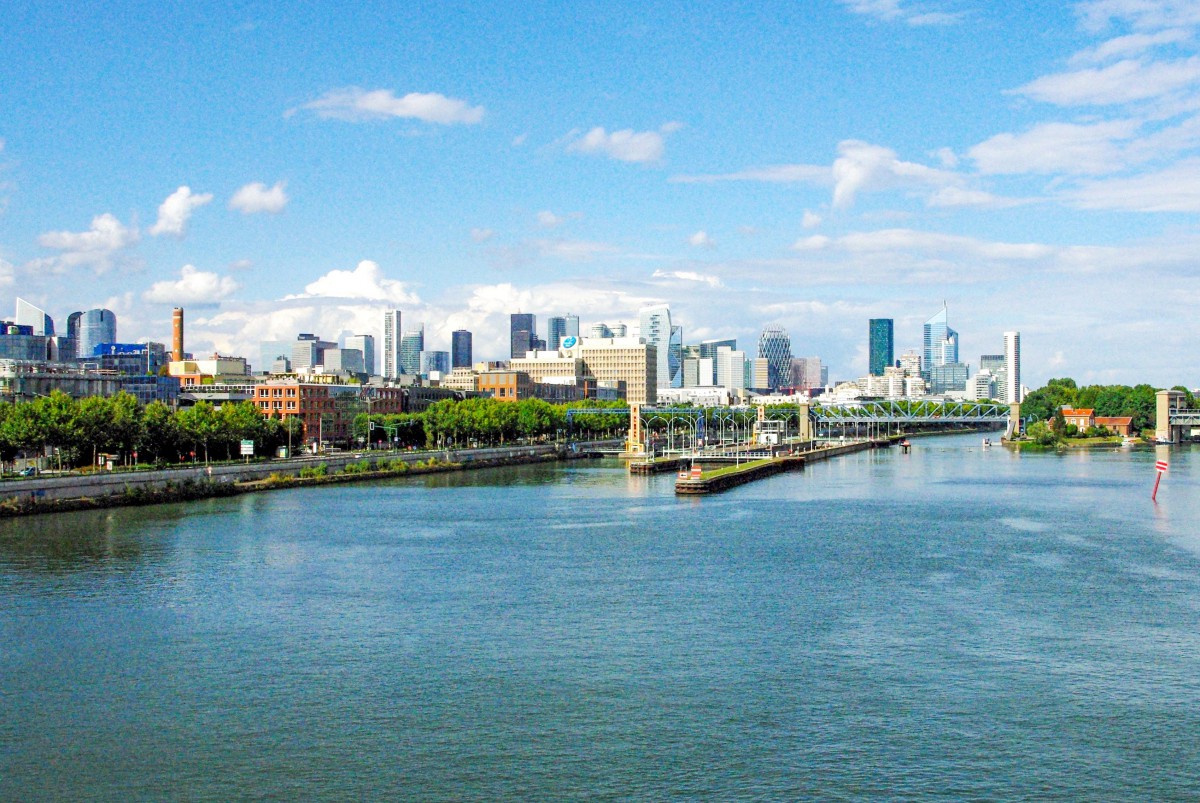
By the way, don’t miss visiting the beautiful National Parc de Saint-Cloud which overlooks the Seine.
The Seine passes by La Défense, Europe’s largest business district. Between Courbevoie and Neuilly, the tip of the Ile de la Jatte with its temple of love. Originally in Parc Monceau, Louis-Philippe had the folly moved to its present spot circa 1830.
Further away is the Ile de Chatou or Ile des Impressionnistes, once frequented by impressionist painters.
From Saint-Germain-en-Laye to Poissy
From Bougival, the River Seine forms a large meander (or loop) around the forest of Saint-Germain. This leafy part of the Yvelines département is occupied by historical towns and châteaux:
- Marly-le-Roi,
- Saint-Germain-en-Laye,
- Maisons-Laffitte,
- Conflans-Saint-Honorine (where the Oise river meets the Seine),
- and Poissy.
We used to live in Maisons-Laffitte, not far from the banks of the River Seine! To reach Place Saint-Michel by train, we would cross the Seine four times!
Mantes-la-Jolie
Mantes-la-Jolie is famous for its beautiful Gothic church: the Collegiate Notre-Dame.
![The Collegiate of Notre-Dame in Mantes-la-Jolie © Pierre Poschadel - licence [CC BY-SA 4.0] from Wikimedia Commons](https://frenchmoments.eu/wp-content/uploads/2020/05/Mantes-la-Jolie-Collegiate-Notre-Dame-LR-©-Pierre-Poschadel-licence-CC-BY-SA-4.0-from-Wikimedia-Commons.jpg)
Construction of the Collegiate of Notre-Dame started in the 12th century. A student of Viollet-le-Duc, Alphonse Durant, renovated the collegiate from 1851 to 1855.
La Roche-Guyon
La Roche-Guyon is the only member of the Most Beautiful Villages of France label in the Paris region (Ile de France). It is situated at the border with Normandy, on the right bank of the Seine.
The village is dominated by a medieval castle built in the 12th century. The fortress was used to control the river crossing on this particular point of the meander.
The village along the Seine river is very picturesque with its houses and church set against the while cliffs.
Vernon and Giverny
We’re now entering Normandy. There, the landscape features a line of magnificent white cliffs of chalk.
Vernon is the first town in Normandy when coming from Paris. Its town-centre has some pretty half-timbered houses and a fine Flamboyant church (Collegiate of Notre-Dame).
![The façade of the Collegiate of Vernon © Giogo - licence [CC BY-SA 4.0] from Wikimedia Commons](https://frenchmoments.eu/wp-content/uploads/2020/05/Vernon-LR-©-Giogo-licence-CC-BY-SA-4.0-from-Wikimedia-Commons.jpg)
![The Old Mill of Vernon © Spedona - licence [CC BY-SA 3.0] from Wikimedia Commons](https://frenchmoments.eu/wp-content/uploads/2020/05/Vernon-Old-Mill-LR-©-Spedona-licence-CC-BY-SA-3.0-from-Wikimedia-Commons.jpg)

Château Gaillard and Les Andelys
The formidable castle of Château Gaillard overlooks the Seine Valley from its promontory.
![Château Gaillard © Michel Chéron - licence [CC BY-SA 3.0] from Wikimedia Commons](https://frenchmoments.eu/wp-content/uploads/2020/05/Château-Gaillard-LR-©-Michel-Chéron-licence-CC-BY-SA-3.0-from-Wikimedia-Commons.jpg)
At its foot lies the little town of Petit Andely and its church of Saint-Sauveur from the 13th century.
![Petit-Andely from Chateau-Gaillard © Tristan Nitot - licence [CC BY-SA 3.0] from Wikimedia Commons](https://frenchmoments.eu/wp-content/uploads/2020/05/Petit-Andely-from-Chateau-Gaillard-LR-©-Tristan-Nitot-licence-CC-BY-SA-3.0-from-Wikimedia-Commons.jpg)
![The Collegiate of Les Andelys © Linotte Auguste - licence [CC BY-SA 3.0] from Wikimedia Commons](https://frenchmoments.eu/wp-content/uploads/2020/05/Collegiate-Les-Andelys-LR-©-Linotte-Auguste-licence-CC-BY-SA-3.0-from-Wikimedia-Commons.jpg)
Rouen
Next stop: Rouen, one of the three cities (besides Paris) along the Seine River with a population of over 100,000.

The first time I visited Rouen, I was in awe of the hundred half-timbered houses and Gothic churches. If you’re fond of these medieval styles, you’ll love Rouen.
Landmarks of Rouen
Here are the not-to-miss landmarks:
The Cathedral Notre-Dame de Rouen, France’s tallest cathedral (151 m), a masterpiece of Gothic architecture in Normandy.
The Saint-Maclou church and Saint-Ouen abbey church.
The Parliament of Normandy, a fine civil building in Flamboyant Gothic.

The Gros-Horloge on rue du Gros-Horloge.

Place du Vieux-Marché where Joan of Arc was burnt at the stake.
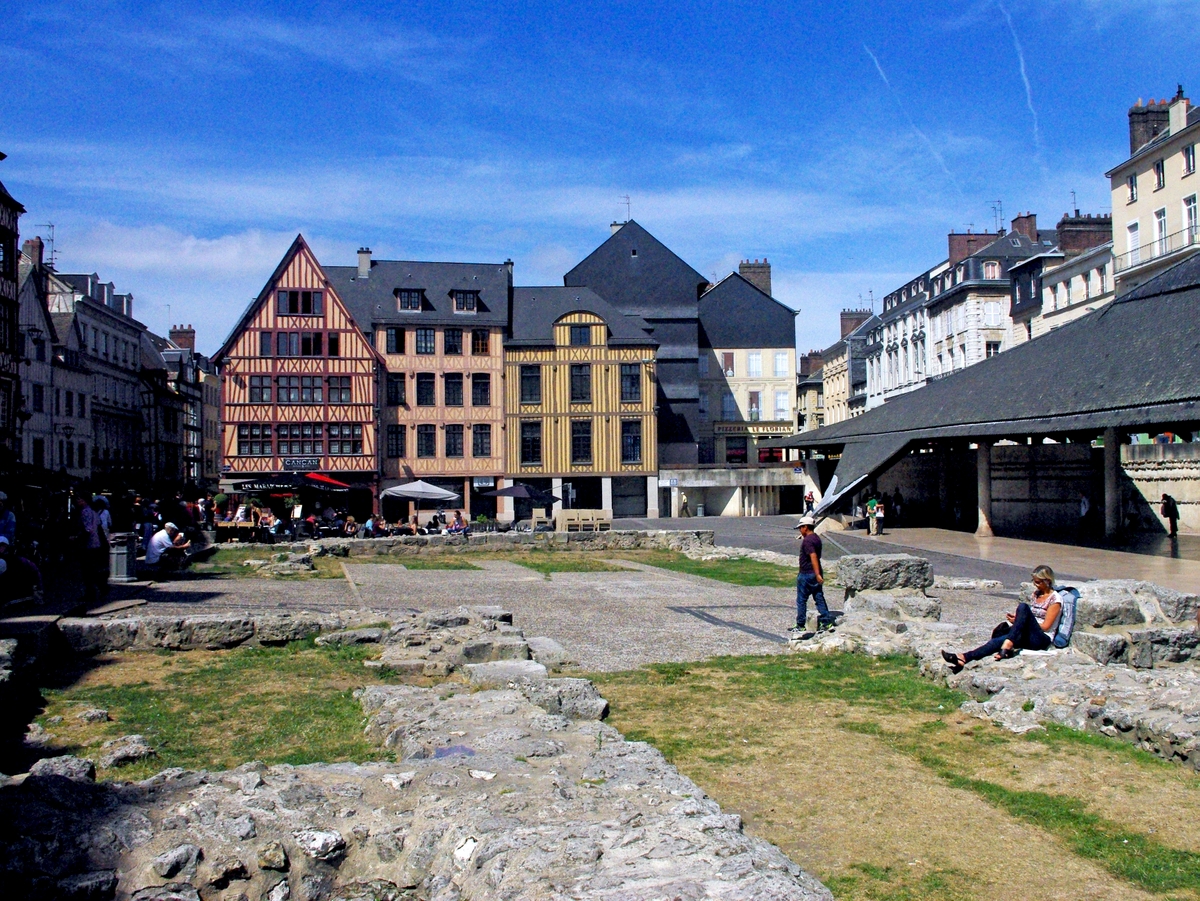
The hundreds of half-timbered houses scattered across the old town.
Along the Seine River, Rouen makes definitely a great stopover.
Along the Seine River West of Rouen
The Seine keeps forming great meanders in the western region of Rouen. They encompass a few iconic sites such as:
- the former St Georges abbey in Saint-Martin-de-Boscherville,
- the romantic ruins of Jumièges Abbey,
- St Wandrille abbey,
- Notre-Dame church in Caudebec-en-Caux,
- the Gothic castle of Etelan,
- the villages of Villequier and Vieux-Port, and
- the historic town of Lillebonne (Roman theatre and Gothic church of Notre-Dame)
Marais Vernier
The Marais-Vernier is a marshland that stretches on a former meander of the Seine. Steep wooded hills forming a natural amphitheatre dominate the wetland and the last loop of the Seine.
![A thatched cottage in Marais Vernier © Jacques Le Letty - licence [CC BY-SA 4.0] from Wikimedia Commons](https://frenchmoments.eu/wp-content/uploads/2020/05/Marais-Vernier-LR-©-Jacques-Le-Letty-licence-CC-BY-SA-4.0-from-Wikimedia-Commons.jpg)
At the bottom of the hills, a country road is lined with beautiful traditional half-timbered Norman barns. Many of them are thatched cottages surrounded by apple trees and manicured gardens.
![A traditional Norman barn in Marais Vernier © Jacques Le Letty - licence [CC BY-SA 4.0] from Wikimedia Commons](https://frenchmoments.eu/wp-content/uploads/2020/05/Marais-Vernier-LR-©-Ibex73-licence-CC-BY-SA-4.0-from-Wikimedia-Commons.jpg)
Pont de Tancarville
In the distance, you can see the red span of the Tancarville Bridge that crosses the Seine River. The suspension bridge connects Marais-Vernier and Tancarville.
![Along the Seine River: Tancarville Bridge © Sergey Prokopenko - licence [CC BY-SA 3.0] from Wikimedia Commons](https://frenchmoments.eu/wp-content/uploads/2020/05/Tancarville-Bridge-LR-©-Sergey-Prokopenko-licence-CC-BY-SA-3.0-from-Wikimedia-Commons.jpg)
There is a toll for vehicles crossing the bridge, however, access is free for cyclists.
Honfleur
Honfleur is located on the Seine estuary facing the harbour-city of Le Havre. The old town is famous for its old port, making it one of France’s prettiest harbours. The Vieux-Bassin is the historic harbour of Honfleur. Its quays are bordered with high-rise slate-fronted houses packed tightly next to each other.
On the north side of the harbour is the Lieutenancy, where the king’s lieutenant resided.
![La Lieutenance in Honfleur © Daniel Villafruela - licence [CC BY-SA 3.0] from Wikimedia Commons](https://frenchmoments.eu/wp-content/uploads/2020/05/Honfleur-La-Lieutenance-LR-©-Daniel-Villafruela-licence-CC-BY-SA-3.0-from-Wikimedia-Commons.jpg)
The St. Catherine church dates back to the 15th century. As the largest wooden church in France, St. Catherine church was built as a market hall by shipbuilders, using their naval construction techniques. This explains why the inside of the church looks like a boat upside down.
Pont de Normandie
The Pont de Normandie is a formidable cable-stayed road bridge that crosses the river Seine at the beginning of its estuary. The bridge is 2.1 km long and connects Le Havre to Honfleur.
![Along the Seine River: Pont de Normandie © François Roche - licence [CC BY 2.0] from Wikimedia Commons](https://frenchmoments.eu/wp-content/uploads/2020/05/Pont-de-Normandie-LR-©-François-Roche-licence-CC-BY-2.0-from-Wikimedia-Commons.jpg)
As a true monument of France, the Pont de Normandie opened on the 20th of January 1995. At the time, it held two world records:
- the longest cable-stayed bridge (until 2004)
- the longest distance between piers for a cable-stayed bridge (until 1999)
![Along the Seine River: Pont de Normandie © Bruno Corpet - licence [CC BY-SA 3.0] from Wikimedia Commons](https://frenchmoments.eu/wp-content/uploads/2020/05/Pont-de-Normandie-LR-©-Bruno-Corpet-licence-CC-BY-SA-3.0-from-Wikimedia-Commons.jpg)
![Along the Seine River: Crossing Pont de Normandie © François Roche - licence [CC BY 2.0] from Wikimedia Commons](https://frenchmoments.eu/wp-content/uploads/2020/05/Pont-de-Normandie-LR-©-Pline-licence-CC-BY-SA-3.0-from-Wikimedia-Commons.jpg)
Le Havre
The city-harbour of Le Havre occupies the right bank of the Seine estuary on the English Channel, the most frequented waterway in the world.

This strategic situation made it France’s largest container port. Le Havre is the second largest port for total traffic after Marseille and the 6th largest in the European Union.
King François I founded Le Havre (meaning “The Harbour”) in 1517 to replace the older harbour towns of Harfleur and Honfleur.

Following the September 1944 Allied air raids, a team of architects led by Auguste Perret entirely rebuilt the devastated city centre in modernist style.
In 2005, the city centre won world-fame recognition when Unesco included it into its World Heritage list.

Find out more about Le Havre on the blog.
Here ends our journey along the Seine River. I hope you enjoyed it. If you have more suggestions of places to see in the region, let us know by commenting below! We’d love to hear from you!
Pin it for later!
Liked what you read? Pin it on Pinterest:

Along the Seine River: some useful links
The official website of the Regional Tourism Boards for Burgundy, Champagne, Ile de France and Normandy:



![Hotel du Lion Noir, Troyes © Pletalle - licence [CC BY-SA 3.0] from Wikimedia Commons](https://frenchmoments.eu/wp-content/uploads/2020/05/Troyes-Hotel-du-Lion-Noir-LR-©-Pletalle-licence-CC-BY-SA-3.0-from-Wikimedia-Commons.jpg)
![Half-timbered houses in Troyes [Public domain]](https://frenchmoments.eu/wp-content/uploads/2020/05/Troyes-Old-Town-public-domain.jpg)
![Half-timbered houses in Troyes © GFreihalter - licence [CC BY-SA 3.0] from Wikimedia Commons](https://frenchmoments.eu/wp-content/uploads/2020/05/Troyes-Old-Centre-LR-©-GFreihalter-licence-CC-BY-SA-3.0-from-Wikimedia-Commons.jpg)
![The façade of Troyes Cathedral © Gérard Janot - licence [CC BY-SA 3.0] from Wikimedia Commons](https://frenchmoments.eu/wp-content/uploads/2020/05/Troyes-Cathedral-LR-©-Gérard-Janot-licence-CC-BY-SA-3.0-from-Wikimedia-Commons.jpg)
![Nave of Troyes Cathedral © Myrabella - licence [CC BY-SA 4.0] from Wikimedia Commons](https://frenchmoments.eu/wp-content/uploads/2020/05/Troyes-Cathedral-Nave-LR-©-Myrabella-licence-CC-BY-SA-4.0-from-Wikimedia-Commons.jpg)
![Chevet of Troyes Cathedral © Zairon - licence [CC BY-SA 4.0] from Wikimedia Commons](https://frenchmoments.eu/wp-content/uploads/2020/05/Troyes-Cathedral-Chevel-LR-©-Zairon-licence-CC-BY-SA-4.0-from-Wikimedia-Commons.jpg)
![St-Laurent Church in Nogent-sur-Seine - licence [CC BY-SA 3.0] from Wikimedia Commons](https://frenchmoments.eu/wp-content/uploads/2020/05/Nogent-sur-Seine-Eglise-St-Laurent-LR-licence-CC-BY-SA-3.0-from-Wikimedia-Commons.jpg)
![Half-timbered house in Nogent-sur-Seine © François Goglins - licence [CC BY-SA 4.0] from Wikimedia Commons](https://frenchmoments.eu/wp-content/uploads/2020/05/Nogent-sur-Seine-LR-©-François-Goglins-licence-CC-BY-SA-4.0-from-Wikimedia-Commons.jpg)
![Water mill of Nogent-sur-Seine © Dédélembrouille - licence [CC BY-SA 2.5] from Wikimedia Commons](https://frenchmoments.eu/wp-content/uploads/2020/05/Moulin-de-Nogent-sur-Seine-LR-©-Dédélembrouille-licence-CC-BY-SA-2.5-from-Wikimedia-Commons.jpg)




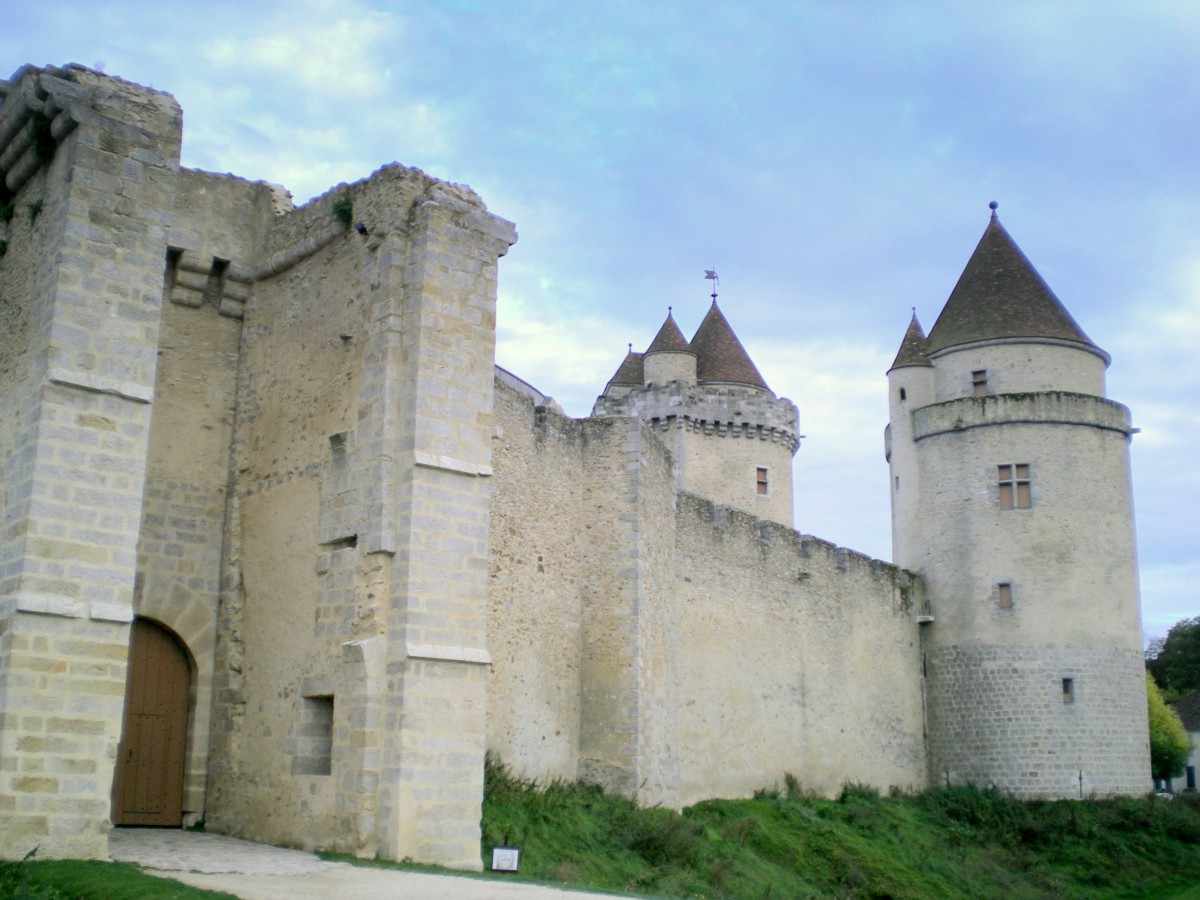
![Ile Saint Etienne, Melun © Tej - licence [CC BY-SA 3.0] from Wikimedia Commons](https://frenchmoments.eu/wp-content/uploads/2020/05/Ile-Saint-Etienne-Melun-LR-©-Tej-licence-CC-BY-SA-3.0-from-Wikimedia-Commons.jpg)




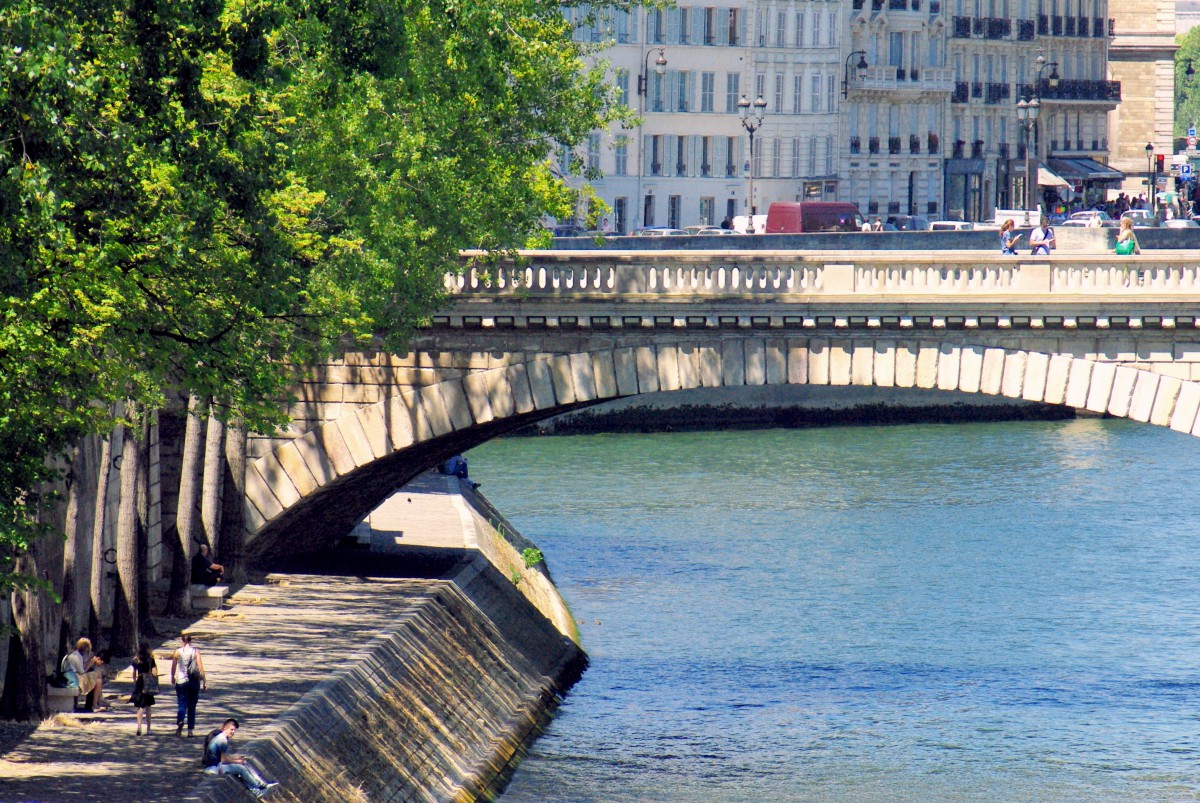










![The castle of La Roche-Guyon © Pierre Poschadel - licence [CC BY-SA 4.0] from Wikimedia Commons](https://frenchmoments.eu/wp-content/uploads/2020/05/La-Roche-Guyon-LR-©-Pierre-Poschadel-licence-CC-BY-SA-4.0-from-Wikimedia-Commons.jpg)
![The village of La Roche-Guyon from the castle © Chatsam - licence [CC BY-SA 3.0] from Wikimedia CommonsJPG copy](https://frenchmoments.eu/wp-content/uploads/2020/05/La-Roche-Guyon-LR-©-Chatsam-licence-CC-BY-SA-3.0-from-Wikimedia-CommonsJPG-copy.jpg)
![The village of La Roche-Guyon from the castle © Calips - licence [CC BY-SA 3.0] from Wikimedia Commons](https://frenchmoments.eu/wp-content/uploads/2020/05/La-Roche-Guyon-LR-©-Calips-licence-CC-BY-SA-3.0-from-Wikimedia-Commons.jpg)








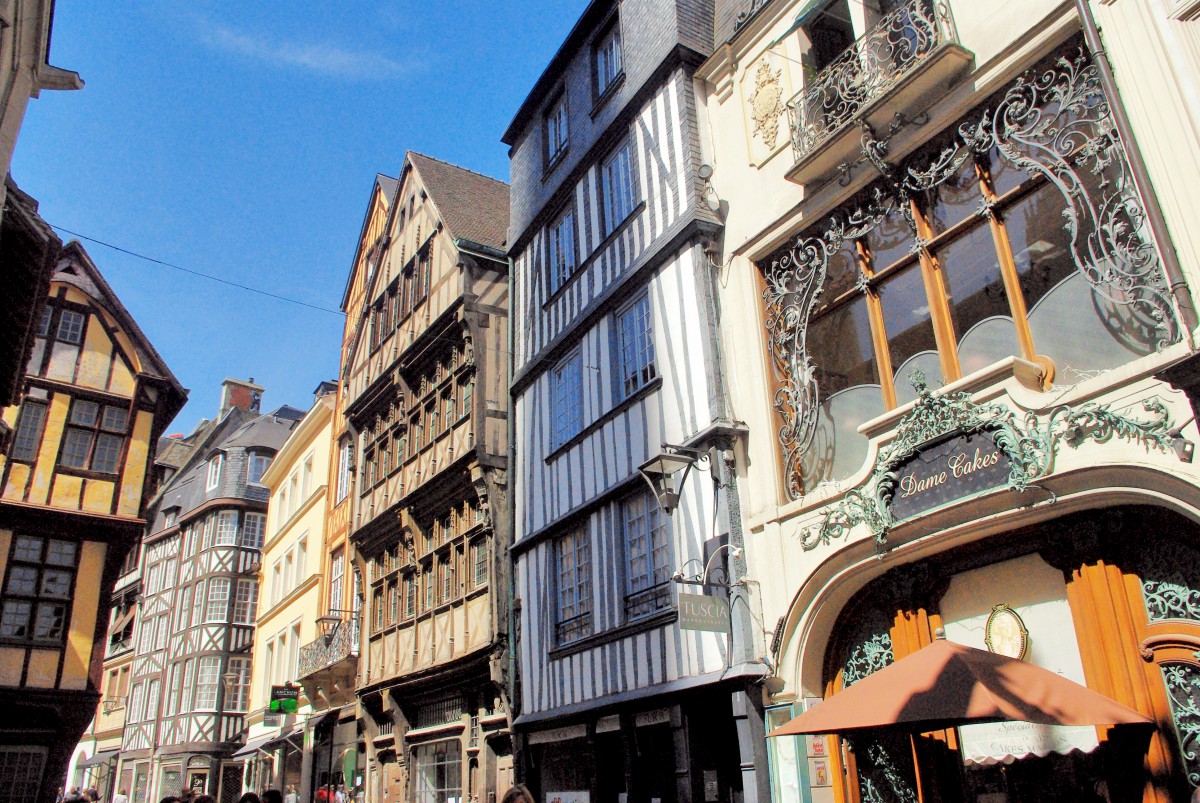
![Saint-Martin de Boscherville: Saint Georges Abbey © Laifen - licence [CC BY-SA 3.0] from Wikimedia Commons](https://frenchmoments.eu/wp-content/uploads/2020/05/Saint-Martin-de-Boscherville-Saint-Georges-Abbey-LR-©-Laifen-licence-CC-BY-SA-3.0-from-Wikimedia-Commons.jpg)
![The cloister of Saint Wandrille Abbey © Paterm - licence [CC BY-SA 3.0] from Wikimedia Commons](https://frenchmoments.eu/wp-content/uploads/2020/05/Saint-Wandrille-Cloister-LR-©-Paterm-licence-CC-BY-SA-3.0-from-Wikimedia-Commons.jpg)
![Lillebonne Roman Theatre from above © Ville de Lillebonne - licence [CC BY-SA 4.0] from Wikimedia Commons](https://frenchmoments.eu/wp-content/uploads/2020/05/Lillebonne-Roman-Theatre-LR-©-Ville-de-Lillebonne-licence-CC-BY-SA-4.0-from-Wikimedia-Commons.jpg)
![The church of Caudebec-en-Caux © Pline - licence [CC BY-SA 3.0] from Wikimedia Commons](https://frenchmoments.eu/wp-content/uploads/2020/05/Caudebec-en-Caux-LR-©-Pline-licence-CC-BY-SA-3.0-from-Wikimedia-Commons.jpg)
![The ruins of Saint Wandrille Abbey © Adsum Dixit - licence [CC BY-SA 4.0] from Wikimedia Commons](https://frenchmoments.eu/wp-content/uploads/2020/05/Saint-Wandrille-Abbey-LR-©-Adsum-Dixit-licence-CC-BY-SA-4.0-from-Wikimedia-Commons.jpg)
![The ruins of Jumièges Abbey by Franz Golhen [Public Domain]](https://frenchmoments.eu/wp-content/uploads/2020/05/Jumièges-Abbey-by-Franz-Golhen-Public-Domain.jpg)
![The high-rise houses, Honfleur © Pir6mon - licence [CC BY-SA 3.0] from Wikimedia Commons](https://frenchmoments.eu/wp-content/uploads/2020/05/Honfleur-LR-©-Pir6mon-licence-CC-BY-SA-3.0-from-Wikimedia-Commons.jpg)
![Honfleur © Pinpin - licence [CC BY 2.5] from Wikimedia Commons](https://frenchmoments.eu/wp-content/uploads/2018/09/Honfleur-Explore-Normandy-©-Pinpin-licence-CC-BY-2.5-from-Wikimedia-Commons.jpg)
![The Vieux-Bassin of Honfleur © Rebexho - licence [CC BY-SA 3.0] from Wikimedia Commons](https://frenchmoments.eu/wp-content/uploads/2020/05/Honfleur-LR-©-Rebexho-licence-CC-BY-SA-3.0-from-Wikimedia-Commons.jpg)
![A stroll in old Honfleur © Dennis Jarvis - licence [CC BY-SA 2.0] from Wikimedia Commons](https://frenchmoments.eu/wp-content/uploads/2020/05/Honfleur-LR-©-Dennis-Jarvis-licence-CC-BY-SA-2.0-from-Wikimedia-Commons.jpg)
![A street in the old centre of Honfleur © Pir6mon - licence [CC BY-SA 3.0] from Wikimedia Commons](https://frenchmoments.eu/wp-content/uploads/2020/05/Honfleur-street-LR-©-Pir6mon-licence-CC-BY-SA-3.0-from-Wikimedia-Commons.jpg)
![A street in old Honfleur © Jbdeparis - licence [CC BY-SA 4.0] from Wikimedia Commons](https://frenchmoments.eu/wp-content/uploads/2020/05/Honfleur-rue-Haute-LR-©-Jbdeparis-licence-CC-BY-SA-4.0-from-Wikimedia-Commons.jpg)
![The bell tower of Sainte-Catherine church in Honfleur by Nikater [Public Domain]](https://frenchmoments.eu/wp-content/uploads/2020/05/Honfleur-by-Nikater-Public-Domain.jpg)
![Church of Sainte-Catherine in Honfleur © Daniel Villafruela - licence [CC BY-SA 3.0] from Wikimedia Commons](https://frenchmoments.eu/wp-content/uploads/2020/05/Honfleur-LR-©-Daniel-Villafruela-licence-CC-BY-SA-3.0-from-Wikimedia-Commons.jpg)
![The roof of Ste Catherine Church in Honfleur © Ibex73 - licence [CC BY-SA 4.0] from Wikimedia Commons](https://frenchmoments.eu/wp-content/uploads/2020/05/Honfleur-Ste-Catherine-LR-©-Ibex73-licence-CC-BY-SA-4.0-from-Wikimedia-Commons.jpg)


Excellent article. Beautiful pictures. Makes me want to see every town and village in France.
Stay healthy, safe and sane
Patti from Vancouver Canada
Thank you Patti, you’re very kind! 🙂
Pierre, absolutely wonderful article & photos about the Seine. We loved our Seine river cruise a couple years ago from Paris to LeHavre, but I see there is much more to explore along the Seine going east. Thank you for allowing me to “visit” France again while we wait for the world to re-open! I’ve had to cancel my return to Paris in May/June this year, and will re-schedule in the future. As a former student of the French language (LONG ago, it was my college major!), I love France and most all things French. It sounds cliché, I know, but I just love the country, culture, people and food. Thank you again. All the best, Jan (from Ohio & Michigan, USA)
Thank you Jan! Yes, the part of the Seine to the east of Paris is worth visiting too, but is very different from the landscape in Normandy! Have a nice day! ?
Thank you Pierre for a fantastic story on the Seine, I did a much much much shorter version for my French class last year and am forwarding this hoping it will be of interest to the other class mates. I stood on the the first bridge and wish I had thought to stand with one leg on the left bank and the other on the right . You put so much work into this , I did enjoy it , thank you Jill , Adelaide Australia
Thank you Jill, very happy to hear that you enjoyed reading about the Seine! Bonne journée en Australie 🙂
Loved this article! Of all then places I have only visited Paris and Honfleur. My son lives in France so maybe I will get to visit some more of them.
Thanks
Valerie
You’re welcome Valerie! 🙂